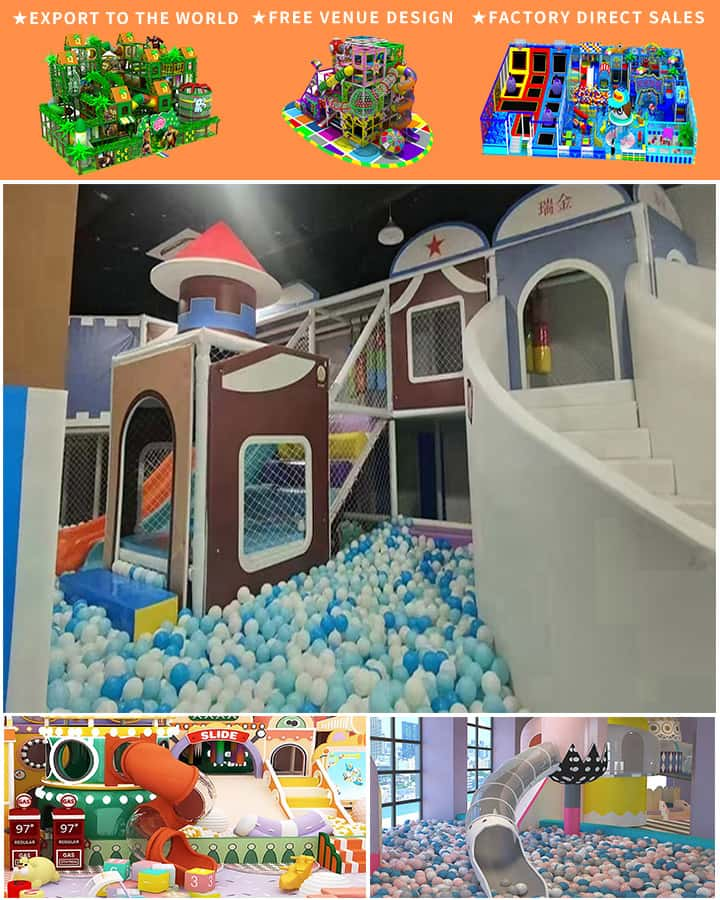Designing an indoor playground that captivates children’s imagination while ensuring safety and engagement is both an art and a science. With urban spaces becoming increasingly compact, innovative indoor playground equipment design has become essential in creating dynamic environments where kids can learn, play, and grow. Here are some imaginative ideas to consider for crafting the ultimate indoor playground experience.
1. Themed Play Zones Thematic designs are a fantastic way to transport children into different worlds, from jungle adventures to outer space odysseys. Each themed zone can be equipped with specific play structures such as climbing frames shaped like trees, or tunnels resembling spaceship corridors. These immersive themes not only stimulate creativity but also enhance motor skills as children navigate through various obstacle courses.
2. Multi-Level Structures Incorporating multi-level structures adds excitement and variety to an indoor playground. Elevated platforms connected by bridges, slides, and ladders encourage physical activity and help develop children’s spatial awareness. Ensure all elevated areas have soft landing surfaces and secure railings to maintain safety standards.
3. Interactive Digital Installations Blend traditional play with modern technology by integrating interactive digital installations. Touchscreens embedded within climbing walls or floors can display games, educational content, or animations when touched. These installations can adapt to different age groups, providing cognitive challenges along with physical ones.

4. Modular Play Systems Flexibility is key in accommodating diverse age ranges and abilities. Modular play systems allow for easy rearrangement of components, making it possible to create new layouts and difficulty levels as needed. These adaptable structures ensure that the playground remains engaging and accessible over time.
5. Soft Play Areas Safety is paramount, especially in high-traffic indoor areas. Soft play areas, filled with foam shapes and cushioned flooring, provide a safe environment for toddlers and young children. Incorporate colorful shapes and soft textures to stimulate sensory exploration and imaginative play.
6. Educational Elements Combine fun with learning by incorporating educational elements into the playground design. Puzzle panels, alphabet mats, and math-based games can subtly introduce educational concepts during play. These elements not only entertain but also foster cognitive development in an enjoyable manner.
7. Nature-Inspired Features Bringing elements of nature indoors can create a serene yet stimulating environment. Use materials like natural wood, incorporate living green walls, or design play structures that mimic outdoor settings like hills and forests. Such designs can provide a refreshing change of pace and promote environmental consciousness among young minds.
8. Customizable Play Equipment Personalization can set an indoor playground apart. Customizable elements such as adjustable height slides, interchangeable panels, or themed decorations allow parents and caregivers to tailor the experience according to their child’s preferences and developmental stage.
9. Inclusive Play Spaces Ensuring that every child can enjoy the playground is crucial. Design inclusive play spaces that cater to children with varying physical abilities. Features such as wheelchair-accessible carousels, sensory-rich panels, and tactile paths can make the playground a welcoming place for all children.
Conclusion Creating an indoor playground involves a thoughtful blend of creativity, functionality, and safety. By exploring these innovative design ideas, you can transform a simple recreational space into a vibrant hub of activity, learning, and fun. Whether through themed zones, modular structures, or tech-savvy installations, the possibilities are endless in designing an indoor playground that will delight children and inspire their imaginations for years to come.




